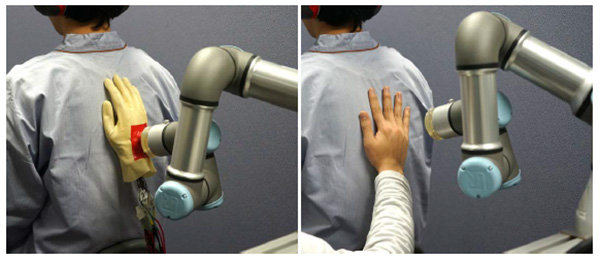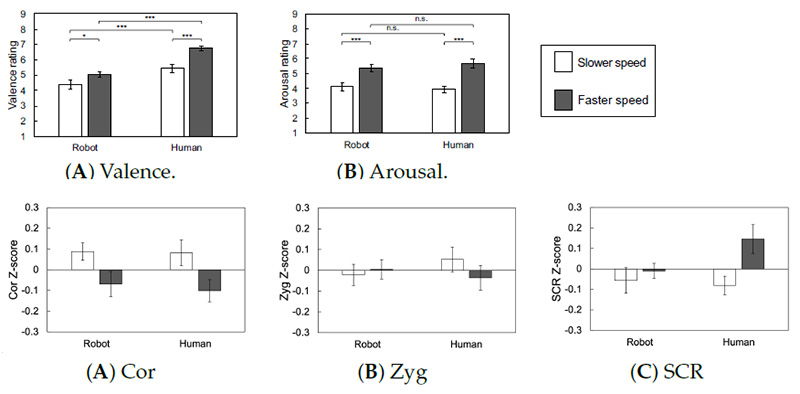SATO Wataru Laboratory
Pleasant stroke touch on human back by a human and a robot
(Ishikura, Yuki, Sato, Takamatsu, Yuguchi, Cho, Ding, Yoshikawa, & Ogasawara: Sensors)
Pleasant touching is an important aspect of social interactions that is widely used as a caregiving technique.
To address the problems resulting from a lack of available human caregivers, previous research has attempted to develop robots that can perform this kind of pleasant touch.
However, it remains unclear whether robots can provide such a pleasant touch in a manner similar to humans.
To investigate this issue, we compared the effect of the speed of gentle strokes on the back between human and robot agents on the emotional responses of human participants (n = 28).
A robot or a human stroked on the participants' back at two different speeds (i.e., 2.6 and 8.5 cm/s).
The participants' subjective (valence and arousal ratings) and physiological (facial electromyography (EMG) recorded from the corrugator supercilii and zygomatic major muscles and skin conductance response) emotional reactions were measured.

The subjective ratings demonstrated that the speed of 8.5 cm/s was more pleasant and arousing than the speed of 2.6 cm/s for both human and robot strokes.
The corrugator supercilii EMG showed that the speed of 8.5 cm/s resulted in reduced activity in response to both human and robot strokes.

These results demonstrate similar speed-dependent modulations of stroke on subjective and physiological positive emotional responses across human and robot agents and suggest that robots can provide a pleasant touch similar to that of humans.
Return to
Recent Research.
Return to
Main Menu.

